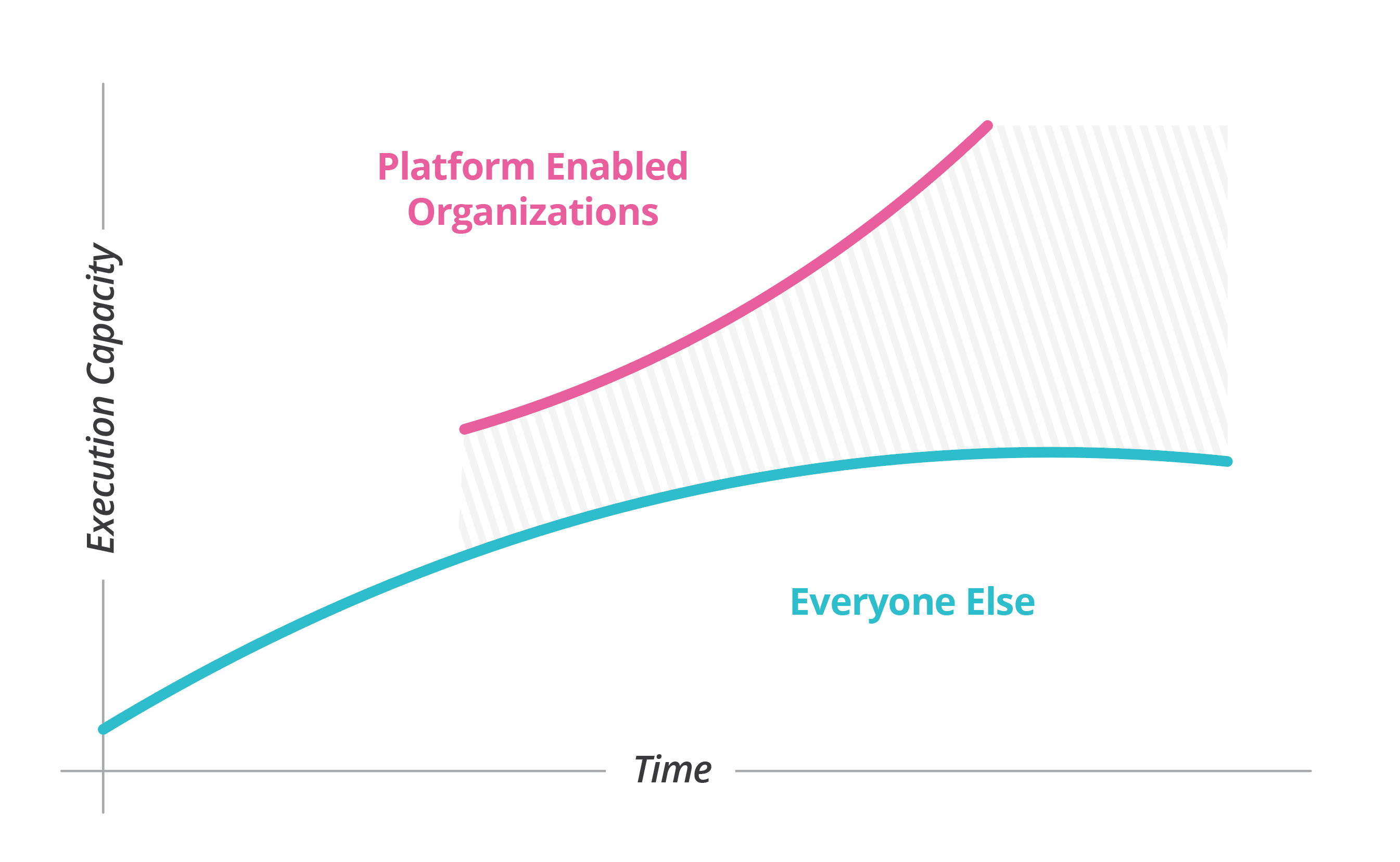On March 14, 2006, Amazon Web Services launched EC2, enabling users to rent virtual servers to run their applications in the cloud. EC2 was a revolution and grew rapidly, but overtime, what previously differentiated the service became commoditised as competitors developed similar products.
Then in 2014, Amazon launched another revolutionary product, AWS Lambda, a serverless computing platform that enables customers to run code without setting up servers in EC2. Amazon was the first mainstream cloud provider to launch a serverless product, again differentiating themselves from their competitors. They managed to get to market quickly by building on the existing capabilities of EC2.
Eventually, Lambda will become a commodity service, but Amazons next revolutionary product could be built on the capability Lambda provides, just as Lambda was built on EC2.
So, how can you do the same as Amazon and turn today's products into tomorrows capabilities?
The first step is to understand what capabilities already exist in your product. To find these consider which components of the product could provide value to a potential customer independently. For example, most products have an authentication system, if you have built your own, you *could* sell this independently.
Next, you want to understand which of these capabilities could provide unique value to a potential customer. In the case of authentication, it's unlikely your system is much different to anyone else's so it probably won't provide unique value. In contrast, the ability to run any function in the cloud with no infrastructure setup would be a great example of a core capability.
These unique, core capabilities are the ones to invest in. As Adrian Cockcroft, says "Don't do your own undifferentiated heavy lifting", focus your resources on building core capabilities that are differentiators. You should turn these capabilities into services with interfaces that can be utilised by your existing product, new products and maybe even sold to external customers.
Equally, you should stop investing in undifferentiated capabilities, like authentication, which you can buy from external providers. The time and money spent on 'undifferentiated heavy lifting' is much better invested in innovation activities that extend upon your core capabilities rather than reinventing the wheel.
As the speed of innovation continues to increases so does the time it takes for a new product to become commoditised. To reduce the risk of competitor disruption organisations need to find ways to enable faster product evolution by creating enablers of innovation and removing organisational constraints.
ThoughtWorks Digital Platform Strategy
Creating interfaces to core capabilities is one of these enablers. Provided as a self-service platform, these capabilities allow teams to build on what came before, leading to faster innovation. They also increase the number of new products you can launch, boosting the likelihood of you finding that next successful product.
